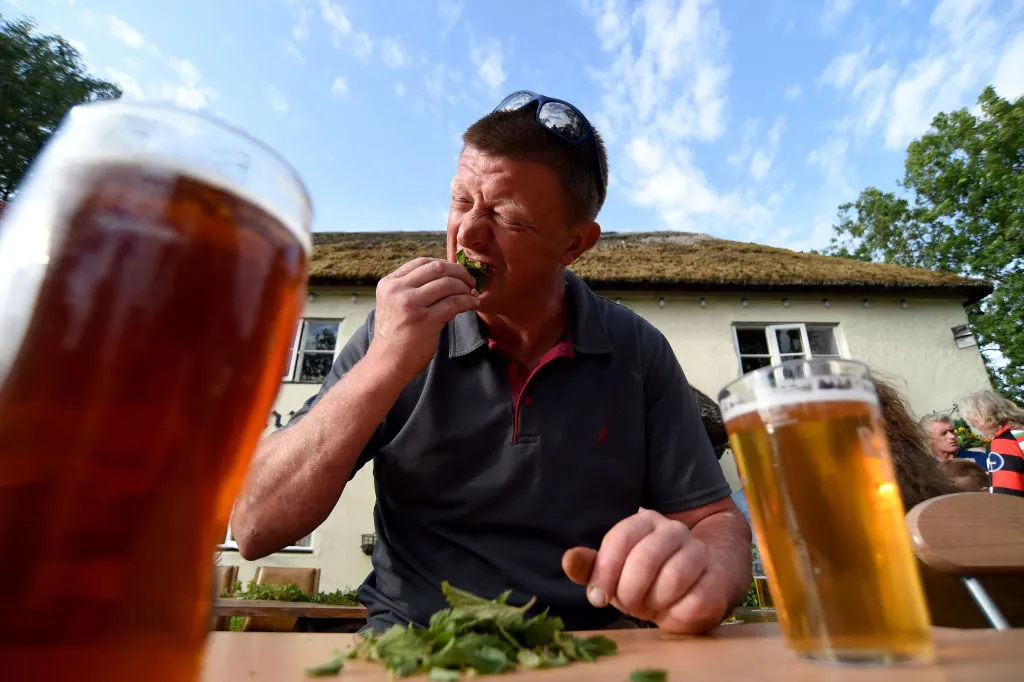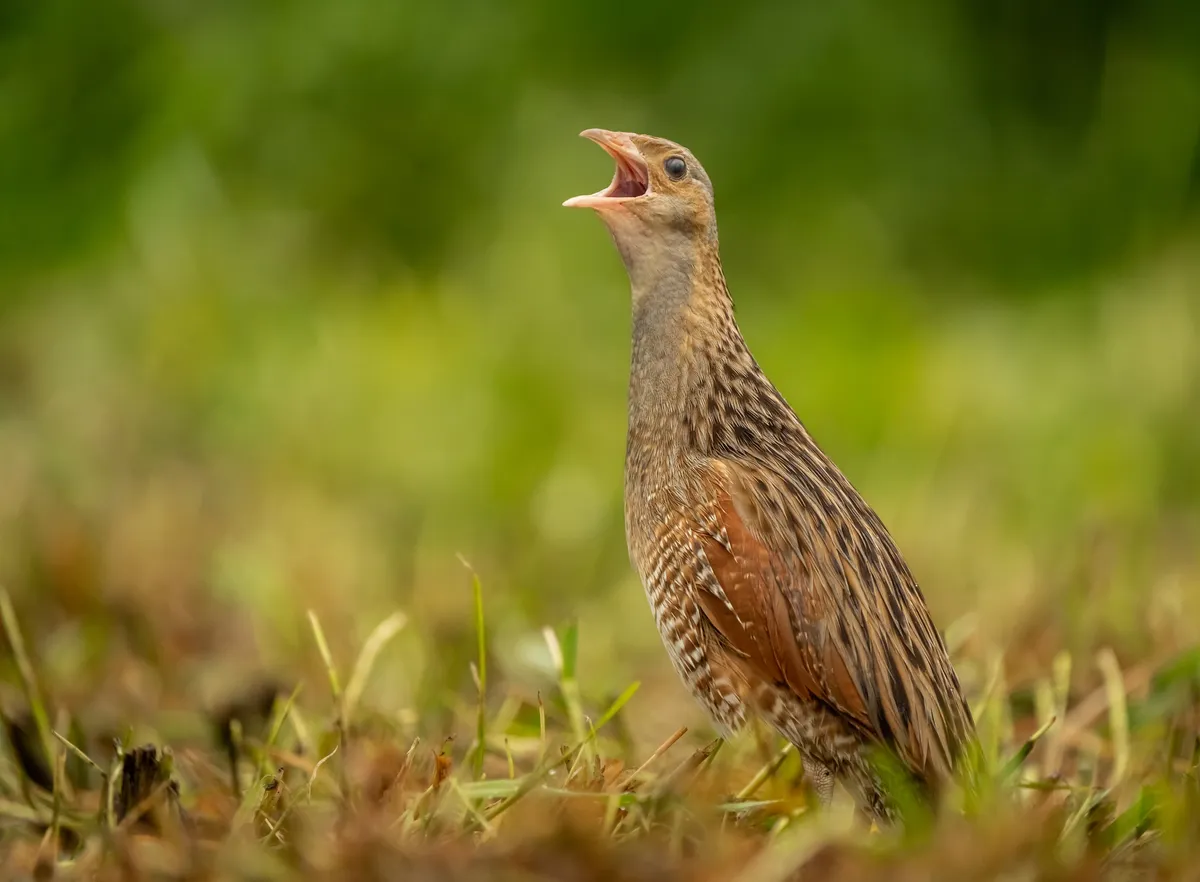If you've ever been stung, you may not be a big fan of nettles, but they are actually a great source of food and shelter for wildlife, from butterflies and aphids, to corncrakes.
However large and thick nettle patches can be a symptom of air pollution levels – which boosts the levels of nitrogen in the soil.
You may decide to risk the stings and forage for nettles (don't forget to wear gloves). The cooking process breaks down the stinging hairs, and the leaves are versatile and can be used in a variety of ways, including soup, pesto, beer and tea.
What is the scientific name of the stinging nettle?
The scientific name of the stinging nettle, also known as the common nettle, is Urtica dioica.
There are six subspecies of the stinging nettle.
How do nettles sting?
Stinging hairs of nettles are hollow, pointed cells with a tip made of pure silica, which breaks leaving a jagged point when you brush against it. The nettle sting contains irritants – mainly formic acid and histamines – that are injected into the surface layer of the skin cells.
Why are plants hairy?
Plant hairs, also called trichomes, are like a smart botanical equivalent of mini, multi- talented octopus arms wielding an armoury of secret chemical and physical weapons and shields. These living cells read and respond to their environment.
Their various uses mean they may be branched, star-shaped, straight, barbed, curly, sticky or poisonous gland-tipped – or even umbrella-like, as in the incredible tree- dwelling bromeliads whose tiny trichomes open when it’s dry to reduce evaporation and close during rain to absorb water.
Those on roots help draw up minerals and water, while hooked stem, fruit and leaf hairs disperse seeds on passing animals. Some help capture prey in carnivorous sundews, others deter the tiniest and largest insect grazers with physical barriers and protect against strong light, cold, wind and water loss.
The nettle family’s needle-like hairs are hollow and loaded with toxic histamine, serotonin and formic acid capable of causing pain, itching and inflammation when a fragile silica tip pierces skin.
This Q&A was answered by Christian Dunn.
Do dock leaves really help with nettle stings?
It is often claimed that crushed dock leaves relieve the pain because their alkaline sap neutralises the nettle’s formic acid, but dock leaf sap is acidic too, so this cannot be true. Nevertheless, many find that the dock leaf remedy seems to work, so there may be other reasons for this.

One possibility is that dock leaf juice evaporating from the skin may have a surface cooling effect on the burning sensation. Another is that dock leaves might contain natural antihistamines that reduce the irritation, though none have been identified. The placebo effect, where faith in the efficacy of dock juice might lower the perception of the sting symptoms, cannot be discounted either.
How to treat stinging nettle stings
If you really want to neutralise the effect of the nettle sting’s acid and dock leaves don’t work, try treating it with soap, milk or a dilute solution of baking soda, all of which are alkaline.
This Q&A was answered by Phil Gates.
Do all stinging nettles sting?
No, there is a stinging nettle subspecies (sometimes considered as a separate species) called the stingless nettle or fen nettle (Urtica dioica galeopsifolia). It lacks, or has very few of, the stinging hairs – and has stingless hairs instead. The leaves are also narrower than stinging nettles.
One of the best places to find stingless nettles is at the National Trust's Wicken Fen reserve in Cambridgeshire.
Can stinging nettles be eaten raw?
It's not recommended that stinging nettles are eaten raw – as they'll sting you!
However, some brave and hardy (maybe foolhardy?) do eat them raw in the World Nettle Eating Championships. This event takes place at the Bottle Inn, in the village of Marshwood in Dorset, and apparently began after two farmers argued over who had the longest nettles in his yard (what a thing to argue over!). The loser then had to eat a stalk of nettles.

Those partaking in this competition have an hour to do so, and cannot vomit – if they do, they're out of the competition. 2-foot long nettles are provided by the competition organisers (so participants couldn't get away with bringing some of these stingless nettles mentioned above!), and water and beer are also provided. The nettles are soaked overnight to keep them fresh and able to sting.
In 2019, more than 100 spectators watched as Tony Jeyes ate 58ft of nettles (winning the men's category) and Lindie Rogers (pictured below) ate 44ft (winning the women's category). Neither came close to the 2018 champion Philip Thorne who ate 104ft (following 86ft in 2016, and 80ft in 2014).

The hairs of stinging nettles are broken down during the cooking process, and when blended for a smoothie.
Can clothing be made from nettles?
People have been wearing nettle fibre for centuries. Napoleon's soldiers wore a uniform made from nettles, as did did the German army in World War I. Nettles make effective clothing because their stems contain long, soft fibres that are naturally strong and elastic, and even have fire-retardant properties.
As a crop, nettle is more environmentally friendly than cotton: it is fast growing, can be cultivated on sites unsuitable for other crops, gives high yields, requires no herbicides (as it outcompetes its fellow weeds) and provides vital habitat for many pollinating insects. There are now moves to utilise nettle fibre in the modern fashion world.
This Q&A was answered by Christian Dunn.
Which species are nettles good for?
Corncrake (Crex crex)

Until World War II, the bizarre grating song of corncrakes drifted across much of lowland Britain and Ireland on May and June nights. Nowadays, most of our breeding ‘land rails’ are confined to traditional hay fields in the Outer Hebrides, Orkney, County Donegal and Connemara, where the elusive birds skulk in lush nettle and iris beds.
But since 2005 there has also been a thriving reintroduced population in the Nene Washes, near Peterborough, with 22 singing males in 2014. To hear their unique nocturnal chorus, walk east or west from Eldernell along the Nene Way. Arrive early and you can enjoy summer- plumaged black-tailed godwits – 90% of the British population nests here.
The scientific name of the corncrake, Crex crex, is an example of a tautonym, where the genus and species epithet are the same.
Butterfly and moth caterpillars

Nettles are a caterpillar food plant for a variety of butterfly species, including small tortoiseshell, red admiral, peacock, painted lady and comma. The plant is also good for moth caterpillars, such as small magpie, burnished brass, mother-of-pearl and spectacle!

Foraging recipes with nettles:
How to make apple and nettle smoothie

Creamy and sweet - this apple and nettle smoothie is an unexpectedly delicious way to get nettle goodness into your daily diet.
How to make nettle gnocchi

These gnocchi are served with a nettle pesto or a tomato and nettle sauce, and are especially tasty with plenty of butter and topped with toasted pine nuts and grated Parmesan.
How to make nettle beer

Writer and wild brewer Pascal Baudar shares his recipe for making nettle beer.
How to make nettle soup

This gorgeous, velvet-green soup has a mineral taste, like strong spinach.
How to make crispy fried stinging nettles

Make these tasty crispy stinging nettles to serve as a side dish, following a recipe on the BBC Countryfile Magazine website.
How to make nettle pesto

Nettle pesto can be made very simply - all you need to do is substitute cooked nettle leaves for the basil or baby spinach you’d normally use. Follow this recipe on the BBC Countryfile Magazine website.
How to make wild garlic, nettle and dandelion tart

This springtime tart – brought to you by Kathy Bishop and Tom Crowford from their Somerset smallholding on the BBC Countryfile Magazine website – is made from foraged ingredients, including wild garlic, nettle and dandelion.
More wild garlic and dandelion recipes:
Main image: A patch of nettles. © Sean Gladwell/Getty





